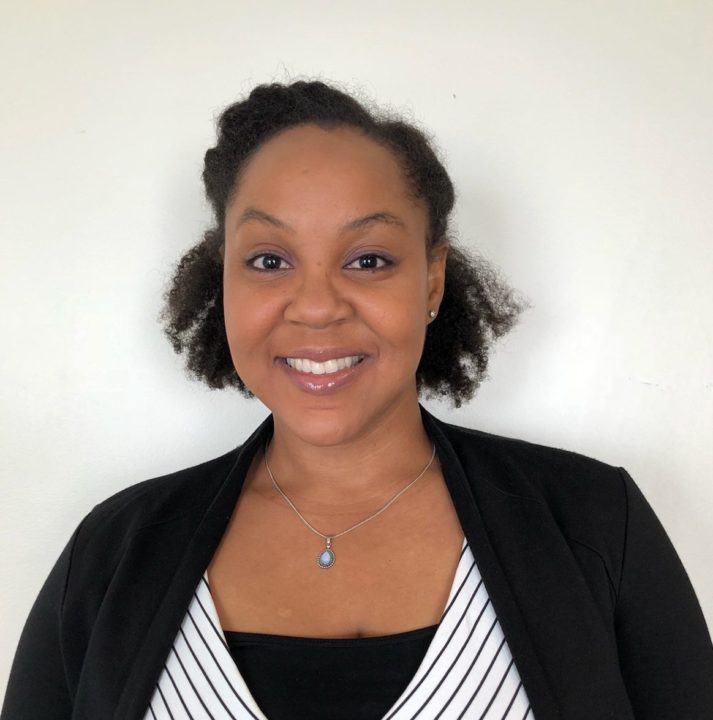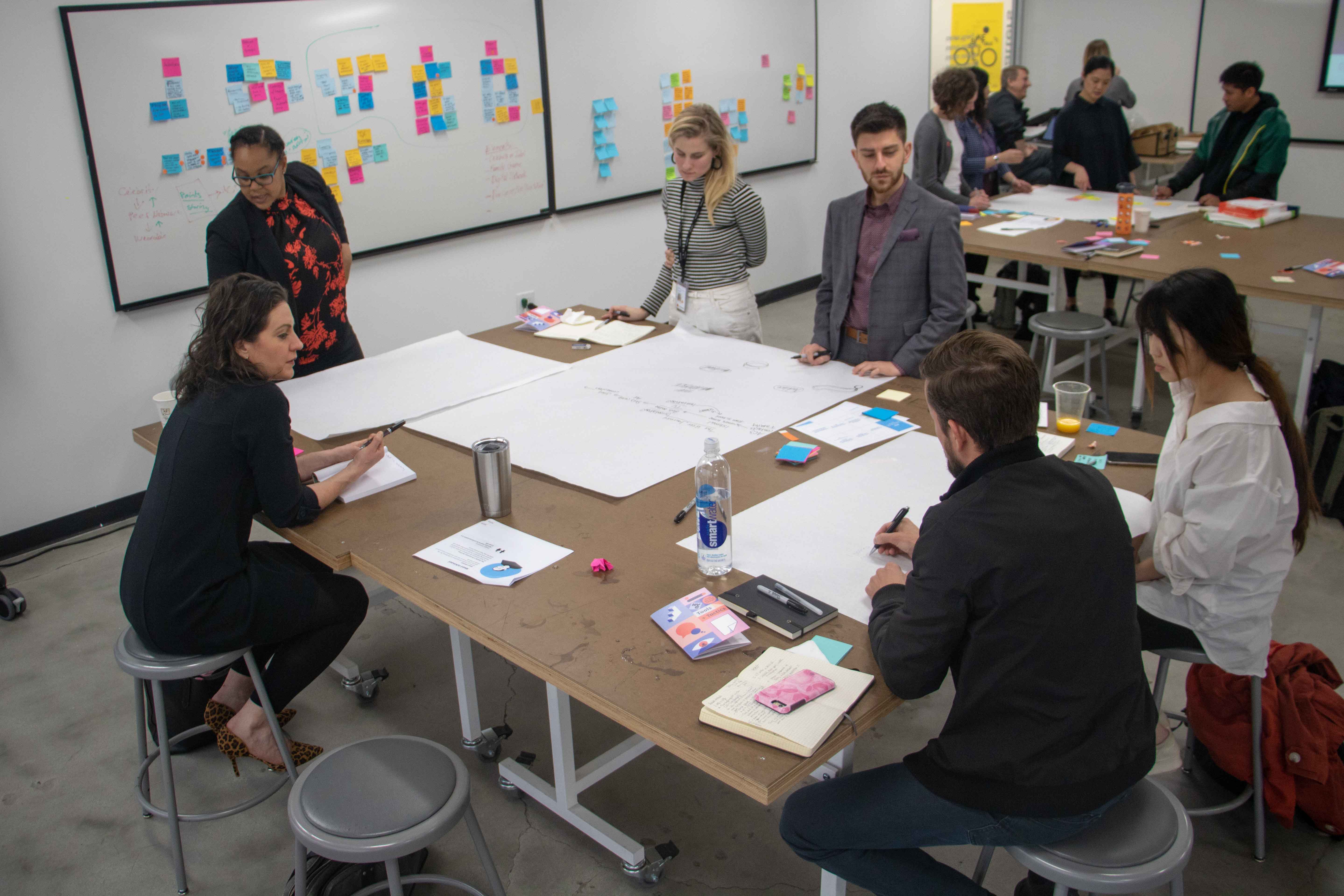In February, we welcomed NYC Service Designer and ArtCenter Alumna Mari Nakano for a mini-residency in which she visited with Designmatters students & faculty, sat in on a panel discussion and held a civic design workshop. We were lucky to have Diamond James (Designer) and Nick Matiasz (Project Manager) from our partner organization Los Angeles Innovation Team as our special guests for the workshop. In this blog post, Diamond reflects on her experience participating in Mari’s Civil Servant + Civic Design workshop.
As the Civic and Social Impact Designer on the Los Angeles Innovation Team, I’m proud to attest that design within local government is living it’s best life to date. Following the push for meaningful data, analysis, and the clamor for data-driven policy, design and its practitioners are increasingly finding homes within City Halls across America and the world at large. This is great news for residents and taxpayers, worldwide.
New York City’s Service Design Studio, directed by Mari Nakano, is innovative and well-conceptualized, “leveling-up” the very idea of how design can not only find its place nestled amongst city agencies, but firmly establish and own its respected position. Housed inside Mayor Bill de Blasio’s Office of Economic Opportunity, the Studio promotes the value of human-centered design to impact creative interventions that align with their office’s anti-poverty programs and initiatives. Through Mari’s introductory workshop, the audience of local professionals, ArtCenter faculty and students, got a hands-on course highlighting core tenets of civic design. It was insightful and energizing; I’m excited to weave New York City’s approaches into our “LA Way” to continue working hard for Angelenos.
Afterwards, I was asked to reflect on my key takeaways from this inspiring workshop. Below are three things I suggest seasoned practitioners and student designers commit to as we navigate this young world of civic design together.
Do Your Research. Build Trust. Focus on Understanding.
The Service Design Studio is currently tasked with improving the experience of children and families risking separation due to suspected negligence or abuse. After many months of in-depth learning with agency staff, families, community-based organizations, and stakeholders in the broad landscape of child welfare, Mari’s team was able to map out the steps that occur when a claim is filed and how New York City tries to help families stay together. They built rapport with organizations that facilitate many of the prevention services, which opened the door for the Studio team to learn from families who had used the services in the past..
Through repeated amiable interaction, you can build trust in the research period, form authentic relationships, and eliminate “othering” and paternalistic sentiments between you and the residents with whom you’re designing. With the knowledge you learn, you can more easily map out an experience or timeline of interaction.
My i-team colleague, Senior Project Manager Nick Matiasz, joined me for the morning session. Trained as an electrical engineer, and new to human-centered design, Nick has become a champion of journey mapping because he has seen the result of the design-based approach to research.
“I’ve found journey mapping to be particularly helpful in our [team’s] design work,” he said. “When you learn about a specific challenge through multiple people’s stories, you can triangulate your understanding and form a basic narrative that makes the challenge more vivid for you.”
“Seeing the multiple ways that this narrative can play out helps you to think of creative ways to address the challenge.”
Find Your Frame.
During the workshop, Mari gave us a snapshot of a family’s journey of interaction with New York City’s child welfare agency. Although the five steps she displayed to explain their experience surely would have provided opportunity for design, Mari shared her team’s deliberate strategy was to choose one step on the journey. They ideated and conceptualized a refreshed approach to matching families to services. Her team framed the scope of ideation, allowing for ideas that would:
1) help make families aware of the city’s prevention services,
2) help families make choices that accommodate their schedules and fit with their lifestyles, and
3) help families take action and sign up for services.
Framing exactly where in a process you’d like to design establishes criteria and parameters for the work to be focused and precise. As a designer, you may inherently inquire about a total overhaul of every process, system and procedure. However, ideating and eventually intervening at every entry point may lead to unrealistic expectations, limited capacity by partners and funders, and a jumble of concepts that may not deliver on your initial project objectives. It may be tough to narrow your frame, but tighter constraints often produce many more meaningful ideas. You don’t want to waste time or money “answering” the least relevant, least impactful or “wrong” question.
Choose Wisely.
After presenting her team’s challenge framework, Mari opened the floor for small groups to collaborate in rapid ideation. Sharpies scribbled, clusters of sticky notes grew in size, and each group frantically worked to prototype their selected idea.
Every group presented a multi-tiered approach to helping New York’s families. From fidget spinner bracelets to a buddy system to VR options, each prototype comprised several steps families could take. As my group worked, I asked if we might want to scale down our approach and spend the time fleshing out one concept.
I believe there is beauty and value in simplicity and editing ideas. As designers, the adage “less is more” often feels counter to satisfying our inquiries and desire to repair what can often feel like a broken world. However, great success can be found by being judicious and confident that no matter how seemingly small, what you’re designing can have much impact based on the quality of your research, context, and quantitative data underscoring the anecdotes.
Being choosy with what you prototype has proven successful in many consumer businesses. Many companies make one cornerstone product very well and are able to see strong demand and profit. A great example of this is In-N-Out. The fast-food chain is a hamburger stand that also happens to also sell fries and shakes for well-balanced meals, but they are devoted to producing a top-quality hamburger. They don’t sell chicken, and aren’t jumping on the poke trend even though demand is high. Rather, they stand by a product that continues to win them awards in their industry, and they optimize and perfect that product.
I recognize that while consumers have choices and may be able to choose a different eatery for every meal, many residents depend solely on their local governments to provide basic rights, utilities and services. Therefore, the need to be thoughtful and deliberate in civic design is imperative. Design stands the chance to be a transformational asset to government leaders who are committed to deliver those rights, utilities, and services in a more effective and equitable way.
The drive to impact several civic and social challenges in a multi-pronged approach is tempting as challenges residents face in a city of 8.5 million, 4 million or even just 15 residents are extensive and complex. However, targeted and simplified ideas can make a difference for specific residents or demographics if the concept, delivery and implementation plan are well thought out. Unfortunately, you can’t do it all, but it’s nice to know that other designers and community members are working equally hard to make change on —what are often— the same issues, ideating similar concepts that will make an impact for their particular focus. We’re all in this together.
 Diamond James is the Civic and Social Impact Designer on the Los Angeles Mayor Eric Garcetti’s Innovation Team. She is committed to advocating for design to increase resident experience and participation with local government. Before joining the i-team, Diamond facilitated youth civic design as a Teaching Artist with the Center for Urban Pedagogy in Brooklyn, New York. She holds a Master of Arts in Social Design from the Maryland Institute College of Art. She is a former Washington Post art director, and holds a baccalaureate journalism degree from Northwestern University.
Diamond James is the Civic and Social Impact Designer on the Los Angeles Mayor Eric Garcetti’s Innovation Team. She is committed to advocating for design to increase resident experience and participation with local government. Before joining the i-team, Diamond facilitated youth civic design as a Teaching Artist with the Center for Urban Pedagogy in Brooklyn, New York. She holds a Master of Arts in Social Design from the Maryland Institute College of Art. She is a former Washington Post art director, and holds a baccalaureate journalism degree from Northwestern University.




